Illuminati Conspiracy Theories
Illuminati Conspiracy Theories Introduction
Illuminati conspiracy theories have long captivated curious minds, weaving together history, speculation, and mystery. They speak to a deep human fascination with power, secrecy, and hidden truths shaping the world around us. But what lies beneath these theories? What truths do they hold, and where does speculation take over?
At its heart, “Illuminati conspiracy theories” refers to the intricate framework of beliefs about a covert organization that supposedly influences events spanning politics, entertainment, religion, and finance. Imagined as an elite, tightly-controlled society working from the shadows, the Illuminati has been credited with everything from societal structure to shaping world events. While claims vary wildly, what unites these theories is the pursuit of understanding unseen forces that may guide outcomes far beyond the everyday person’s control.
This introduction to the world of Illuminati conspiracy theories sets the stage for exploring its rich history, its rise in modern discourse, and why conversations about the Illuminati resonate so strongly in today’s society.
The Origins of the Illuminati as a Secret Society
The real Illuminati began not as an all-powerful organization but as a short-lived intellectual and social movement in 1776. Adam Weishaupt, a Bavarian professor of canon law, founded the Bavarian Illuminati as a response to repression by Church and State. His vision was to promote Enlightenment values of reason, liberty, and equality while challenging the authoritarianism of the era.
For about a decade, the group gained traction among thinkers, scholars, and nobility, united by an ambition to spread progressive ideas in secret. However, the increasing scrutiny from both the Catholic Church and local governments led to its enforced dissolution in the late 1780s.
While the Illuminati disappeared from formal existence, its myth endured and changed. Over the years, whispers about its continued operations began to surface. What began as an intellectual society gradually evolved into a broader, mysterious entity, attributed with mystical powers and unchecked influence.
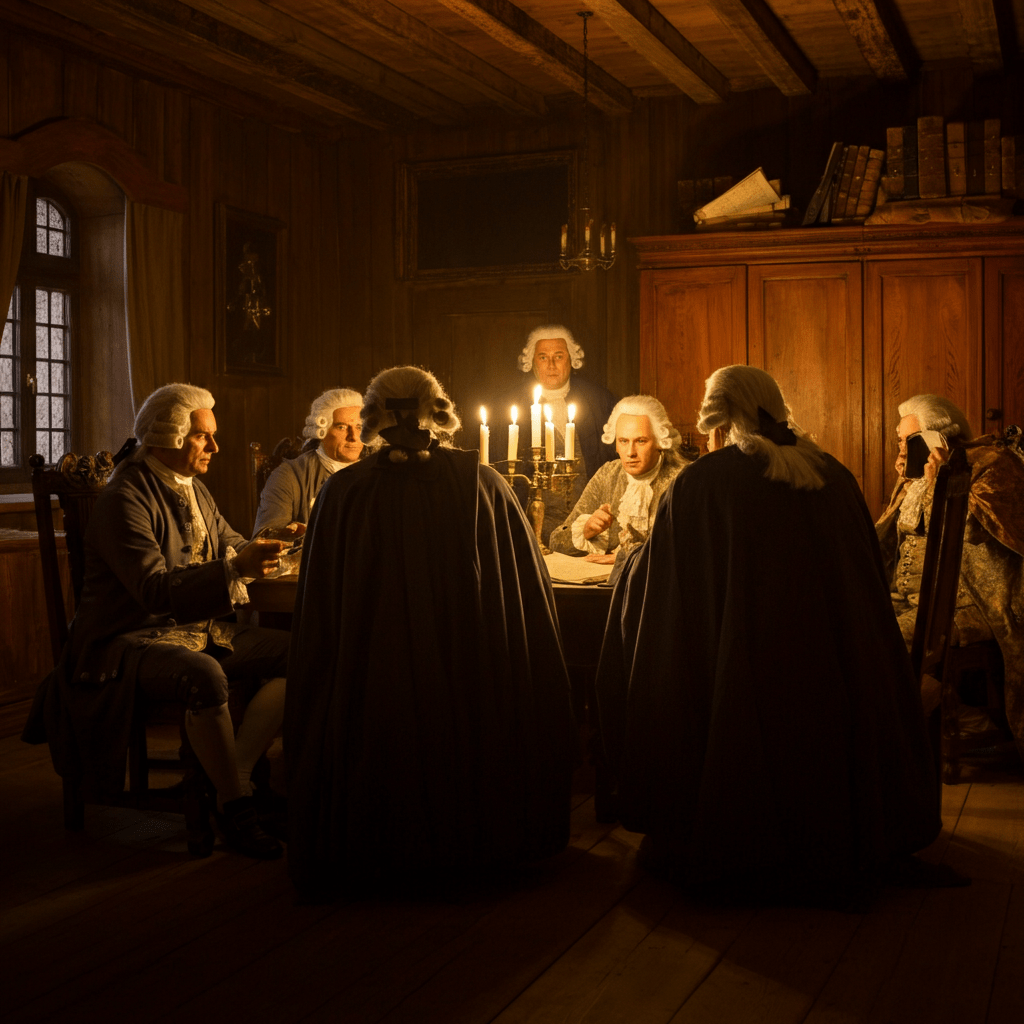
The Rise of Modern Conspiracy Theories
The Illuminati might have fallen from historical records, but it rose from the shadows in the 20th century, reincarnated as the centerpiece of conspiracy theories. This evolution can largely be credited to cultural and literary works as well as social anxieties.
Robert Shea and Robert Anton Wilson’s satirical The Illuminatus! Trilogy in the 1970s brought the idea of the Illuminati into mainstream pop culture. Presented as a covert power structure manipulating all significant events, this fiction became an unconventional gateway for theorists to question the unseen forces in society. Modern works, such as Dan Brown’s Angels & Demons, further stoked the flames by weaving pseudo-history with gripping narratives that felt almost plausible.
Theories about the Illuminati coalesced with growing speculation about symbols and power. The infamous “all-seeing eye” atop the Great Seal on the U.S. dollar bill and pyramidal iconography became widely cited as supposed evidence of their existence. Meanwhile, the internet and social media opened gates to a plethora of amateur thinkers, with YouTube videos and Reddit threads garnering millions of views discussing the Illuminati’s alleged influence over everything from political elections to celebrity careers.
A powerful example of how media breathes life into these theories is the connection to global events. Economic crises, global conflicts, and even cultural trends are often assigned to the covert workings of this alleged group. For instance, a new technology boom or financial system overhaul might be explained as carefully planned steps by the Illuminati. Whether rooted in anxiety or fascination, it feeds a never-ending cycle of speculation.
Why the Illuminati Continues to Fascinate
What is it about Illuminati conspiracy theories that hold such magnetism over contemporary audiences? Part of the answer lies in their appeal to universal human tendencies, both psychological and cultural.
Firstly, these theories offer a sense of order and explanation in a world that often feels chaotic. When economic recessions happen, catastrophic events unfold, or unexplained phenomena occur, attributing them to a grand design led by an omnipotent secret group can be oddly comforting. It asserts that nothing is purely random, but rather part of a vast, interconnected plan.
Secondly, secrecy is inherently alluring. The potential existence of shadowy elites pulling the strings ticks the box of forbidden knowledge we are drawn to uncover. Symbols like the “all-seeing eye” or the frequent appearance of pyramids in pop culture add further mystique, leading people to look for patterns, whether real or imagined.
Finally, these conspiracy theories thrive in a time of mistrust. With wide-reaching corruption scandals, inequality, and technological overreach increasingly in the spotlight, many feel alienated from traditional institutions. Believing in the Illuminati provides an outlet for this skepticism, redirecting frustration into the narrative of villainous puppeteers pulling the strings for their benefit.
For others, fascination with the Illuminati is playful rather than earnest. It’s a chance to engage with cultural mythologies, to wonder “what if” without necessarily committing to belief. Whether approached as genuine belief or speculative entertainment, the spread of these theories shows no signs of disappearing.
Dive deeper into specific stories like Beyoncé and the Illuminati, Is the Illuminati Real?, and Freemason Symbols in Mythology. By exploring these cluster pages, you’ll gain a nuanced understanding of both the fascination and the facts behind conspiracy claims.
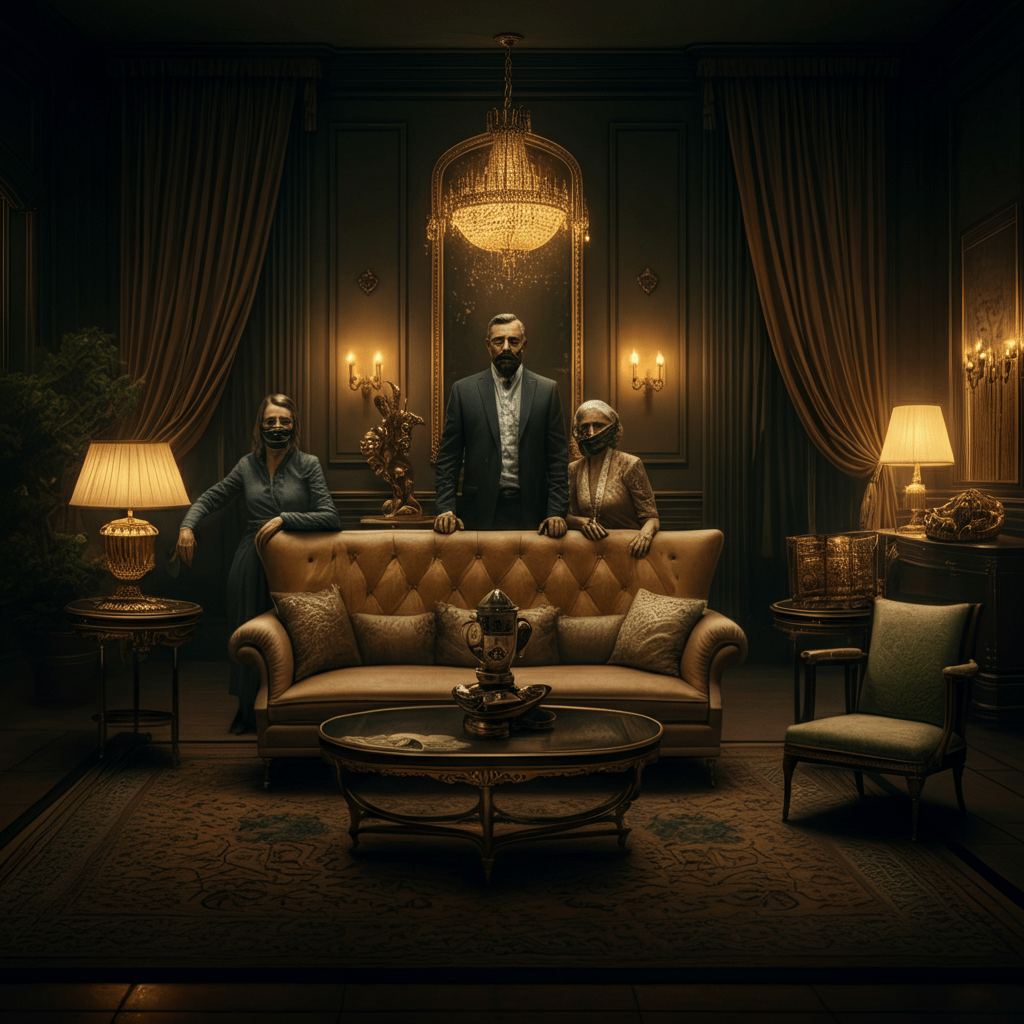
The Origins and Evolution of Illuminati Conspiracy Theories
Understanding Illuminati conspiracy theories requires a deep exploration of their history and how the narrative surrounding them has evolved over centuries. Rooted in both factual beginnings and layers of modern myth, these tales highlight humanity’s fascination with power, secrecy, and control. This section examines the historical origins of the Illuminati and the evolution of its role in conspiracy lore.
A. Historical Context
The Birth of the Bavarian Illuminati
The real Illuminati, far removed from the sensational claims of world domination, originated in the late 18th century. Founded on May 1, 1776, by Adam Weishaupt, the Bavarian Illuminati was created as a secretive group aimed at promoting Enlightenment ideals. At its core, this organization sought to challenge traditional authority, particularly the church and monarchy, advocating for reason, secularism, and egalitarianism in an era defined by rigid hierarchies and dogma.
Operating within Bavaria, Germany, the Illuminati initially recruited intellectuals and progressive thinkers who resonated with the ideals of the Enlightenment. Members used pseudonyms and maintained secrecy to protect their true identities, a necessity given the group’s controversial stance against the status quo. Over time, the organization grew to include individuals from Freemasonry lodges, blending overlapping practices and symbolic rituals.
However, this alliance also attracted scrutiny. By the late 1780s, growing fears of subversion led to the group’s formal disbandment. The Bavarian government outlawed the Illuminati, forcing it underground or altogether out of existence. Despite its dissolution, the ideas it championed and the aura of secrecy it cultivated left a lasting impression, becoming fertile ground for fantastical narratives in years to come.
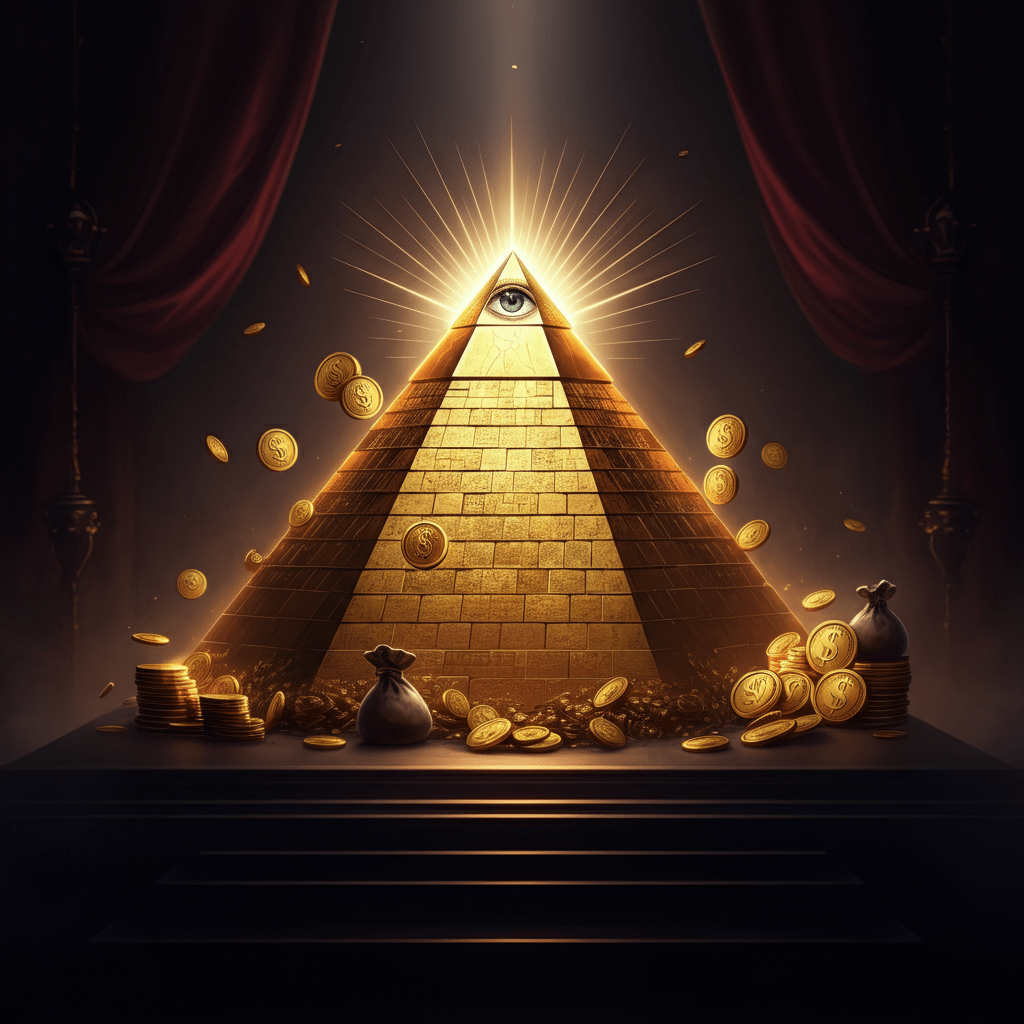
The Role of Secret Societies in Cultural Narratives
Secret societies like the Illuminati have captured popular imagination for centuries, symbolizing the intrigue of hidden knowledge and influence. Throughout history, organizations ranging from Freemasonry to the Knights Templar have inspired both admiration and suspicion. These groups, often shrouded in mystery due to their exclusivity, have become intertwined with the concept of esoteric wisdom or covert power.
The allure of such societies lies partially in what they represent. For some, they embody resistance to oppression, influencing societal change in ways both visible and clandestine. For others, their secrecy breeds fear, casting them as shadowy cabals orchestrating events behind the scenes. Stories of secret societies have been used to explain everything from political upheavals to cultural shifts, filling in gaps where facts and understanding may be lacking.
The Illuminati, in particular, has come to epitomize these secretive powers. Despite its relatively brief historical tenure, its legacy is a fixture in cultural storytelling, blending historical threads with conspiratorial fabrications.

B. Evolution of Modern Conspiracy Theories
How Pop Culture Shaped Perceptions
Fast forward to the 20th and 21st centuries, where the Illuminati transitioned from historical society to a framework for conspiracy theories that thrive today. This shift can largely be attributed to the influence of popular culture, media, and collective imagination.
The Illuminati entered mainstream consciousness through fiction and satire, such as Robert Anton Wilson and Robert Shea’s The Illuminatus! Trilogy in the 1970s. This work combined real historical elements with playful, exaggerated conspiracy theories, presenting the Illuminati as an omnipresent hidden force. While intended as satire, the vivid depictions fueled curiosity and speculation, blurring the lines between reality and storytelling.
Visual symbols associated with the Illuminati gained traction through cultural artifacts like the U.S. dollar bill, which prominently features the “Eye of Providence” atop a pyramid. This imagery, already steeped in symbolic meaning, became repurposed as alleged proof of Illuminati influence. Combined with the rise of accessible media and globalization, these symbols found new life as memes, motifs, and subjects of countless conspiracy videos and articles.
Celebrities and mass media also played a significant role in invigorating Illuminati conspiracy narratives. Musicians, actors, and other public figures often found themselves accused of Illuminati ties based on their use of symbolic imagery or their perceived power and wealth. Songs, music videos, and performances were deconstructed for alleged “hidden messages,” turning artists like Beyoncé and Jay-Z, Rihanna, and Kanye West into frequent targets for speculations about Illuminati membership.
Examples of Popular Theories
Modern Illuminati conspiracy theories cover an expansive range of subjects and individuals. Here are some of the most prominent examples that have gained widespread attention:
- Celebrity Influence
Celebrities are often at the forefront of conspiracy theories relating to the Illuminati. For instance, the triangle hand symbol and pyramid-like gestures in performances or public appearances have been cited as supposed proof of adherence to Illuminati rituals. Links to cluster pages like Beyoncé Illuminati and Rihanna Illuminati unravel these claims further. - Global Control
The idea of the Illuminati orchestrating world events persists as a central plank in conspiracy theories. From financial markets to geopolitical conflicts, this shadowy organization is alleged to influence major decisions. Pages like Is the Illuminati Real? provide deeper examinations of these theories’ origins and credibility. - Occult and Symbolism
Many theories emphasize the Illuminati’s supposed connection to occult practices. Symbols like the all-seeing eye or pyramid-shaped structures are believed to signal their power. Learn more via pages such as Freemason Occult and The Illuminati House. - Hollywood Allegiances
Hollywood’s role in furthering these narratives is undeniable. Films and television shows often depict secret societies wielding immense power, indirectly feeding public fascination. Explore this representation through Hollywood Conspiracy.
How the Digital Age Amplified Theories
The internet, particularly platforms like Reddit, YouTube, and Twitter, has tremendously amplified Illuminati conspiracy theories. Discussions, video essays, and even memes circulate widely, perpetuating both old myths and new speculations. Algorithms also play a significant role, as users are frequently recommended similar content, creating echo chambers that reinforce belief.
Additionally, fears surrounding data privacy, government surveillance, and global crises spur deeper interest in Illuminati narratives. Theories gain traction as they provide explanations for societal disruptions, resonating with groups seeking clarity in an increasingly complex world.
Breaking Down Illuminati Narratives
Modern Illuminati conspiracy theories are as much a product of history as they are of emergent cultural dynamics. They reveal not just a fascination with secretive elites but also collective anxieties about power, control, and inequality. Whether rooted in genuine suspicion or playful intrigue, these theories weave history and modern creativity to form a narrative that captivates millions.
For further exploration, continue to sections like Lebron James Illuminati or Is the Illuminati Real?. Step into the world of cultural myths and modern skepticism to better understand how these narratives thrive in today’s society. The shadows of the Illuminati can be brightened—but only if we take a critical, informed approach.
Illuminati and Celebrities
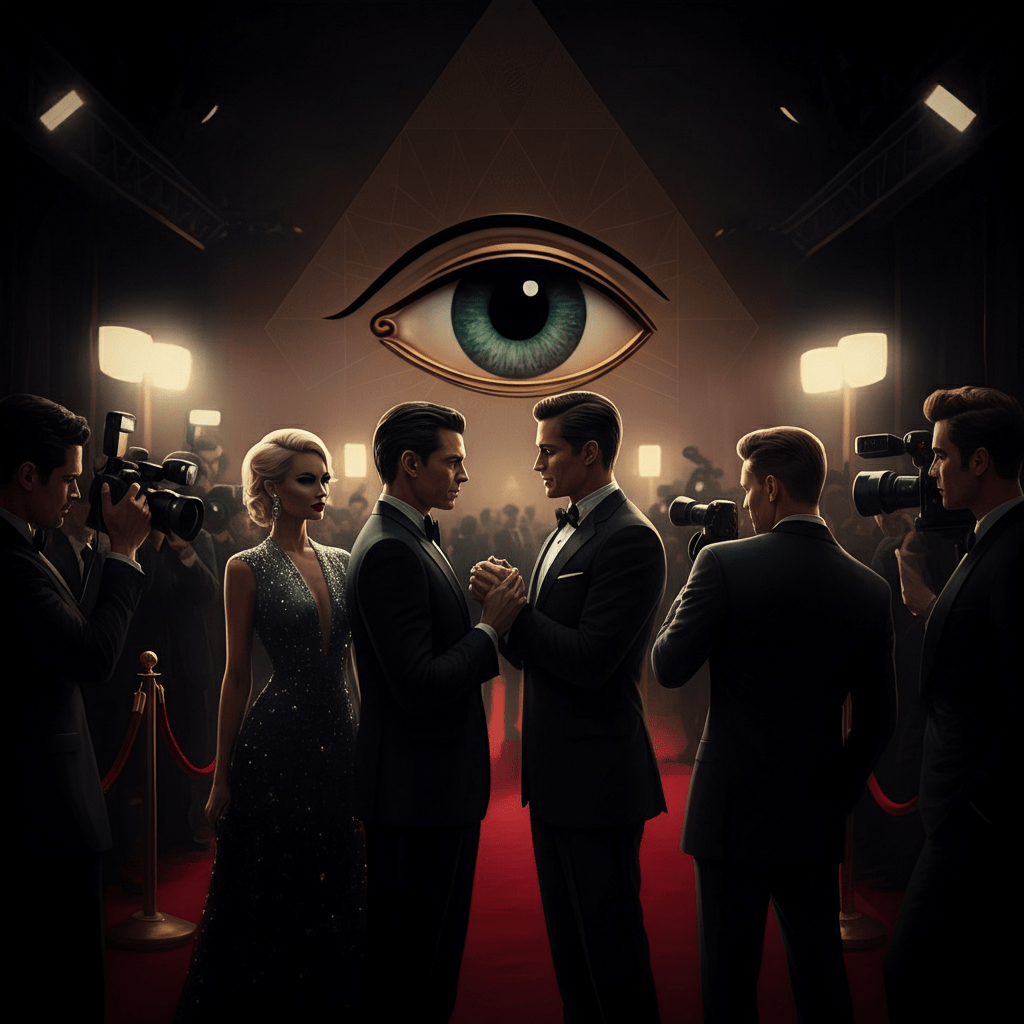
The world of celebrity is often synonymous with power, influence, and a dash of mystique, making it the perfect breeding ground for Illuminati conspiracy theories. Over the years, numerous high-profile figures have been linked to this elusive organization, fueling discussions among believers and skeptics alike. But why are celebrities such frequent targets of such theories, and what patterns keep these speculations alive? This section explores the alleged connections between celebrities and the Illuminati, while shedding light on the cultural phenomena that perpetuate these claims.
A. High-Profile Figures Allegedly Tied to the Illuminati
When it comes to Illuminati conspiracy theories, certain names appear time and time again. From music chart-toppers to sports legends, many of the world’s most recognizable faces have been swept up in these rumors. Here’s a closer look at some of the most frequently cited individuals:
1. Beyoncé and the Illuminati
One of the most pervasive examples is Beyoncé. Often referred to as “Queen Bey,” her immense success, artistry, and ability to captivate global audiences have led conspiracy theorists to allege that her achievements are the result of Illuminati connections. Symbols like triangles in her music videos and performances have only added to these claims. You can uncover more about this narrative through our Beyoncé Illuminati cluster page.
2. Rihanna and the Illuminati
Rihanna has also found herself at the center of Illuminati speculation. Songs like “Umbrella,” with lyrics and visuals that theorists interpret as showcasing loyalty to the Illuminati, have kept these rumors alive. Fans often debate whether her use of provocative imagery is intentional subversion or simply artistic expression. Explore these ideas further via the Rihanna Illuminati page.
3. Lebron James and the Illuminati
Not even the world of sports is immune to these theories. NBA superstar LeBron James is another name frequently associated with the Illuminati. His dominance on and off the court, along with hand gestures interpreted as “Illuminati symbols,” has made him a target of online speculation. Head to the LeBron James Illuminati cluster page to learn more about how conspiracies overlap with his immense influence.
4. Kim Kardashian and the Illuminati
Kim Kardashian is no stranger to media attention or public scrutiny. Her prominence in pop culture, combined with her family’s unprecedented influence, often places her in the Illuminati crosshairs. The use of abstract or symbolic visuals in her fashion and branding campaigns is also commonly dissected by theorists. Find out more on our Kim Kardashian and Illuminati page.
5. Oprah Winfrey and the Illuminati
Oprah Winfrey, arguably one of the most recognizable personalities in media and philanthropy, has not escaped Illuminati allegations. Her vast network of influence, alongside her extraordinary success, frequently serves as “evidence” for conspiracy theorists. To dig deeper, check out the Oprah Illuminati subtopic.
These celebrities, whilst radically different in their fields of influence, all share common threads in Illuminati rumors. Their impressive reach, wealth, and ability to shape societal narratives make them symbolic figures of power, aligning with the core themes often linked to Illuminati narratives.
B. Why Celebrities Are Often Targets
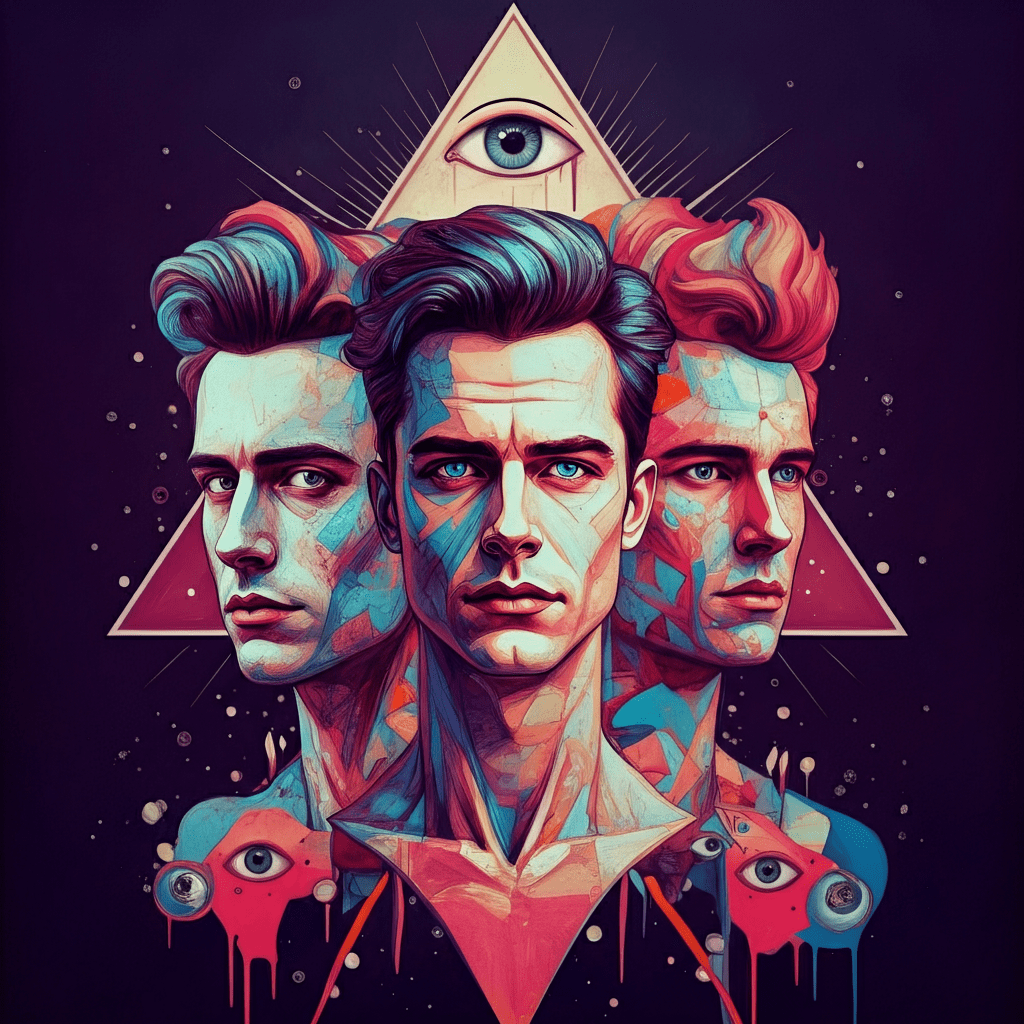
1. The Allure of Wealth, Power, and Influence
At the heart of many Illuminati conspiracy theories involving celebrities is the perceived link between personal success and secret societal support. Celebrities like Beyoncé, Rihanna, and LeBron James reach unparalleled levels of fame and fortune, which many conspiracy theorists see as “suspicious.” It’s the idea that no one becomes as successful as these individuals without support from a shadowy, powerful organization pulling the strings.
On a psychological level, this belief stems from society’s fascination with the combination of wealth and influence. The gap between everyday life and the lives of the ultra-famous often creates a sense of otherworldliness, which pairs neatly with the idea of an otherworldly power like the Illuminati working behind the scenes.
2. The Role of Symbols in Pop Culture
Symbols play a pivotal role in sustaining Illuminati conspiracy theories around celebrities. The infamous “all-seeing eye,” triangle shapes, and pyramid imagery often appear in music videos, performances, and promotional material. For some, these symbols are clear-cut evidence pointing to secret alliances between celebrities and the Illuminati.
For example:
- Music artists like Jay-Z and Rihanna have used triangular lighting designs and gestures in their performances, leading to a flood of speculation online about hidden meanings.
- Fashion choices, from Lady Gaga’s avant-garde designs to subtle motifs in Beyoncé’s concerts, are perceived as coded messages or signs of allegiance.
However, it’s important to recognize that much of this is likely a creative choice rather than direct evidence of secret membership. The entertainment industry often thrives on mystique, intrigue, and bold artistic statements, which coincidentally align with the themes conspiracy theorists are looking for.
3. Pop Culture and Internet Amplification
The internet has amplified the reach of these theories, providing endless forums, social platforms, and videos dissecting celebrity actions. A simple hand gesture or design in a music video is scrutinized and turned into “proof” of Illuminati links, fueling further discourse.
Take, for instance, YouTube channels dedicated solely to analyzing music videos for Illuminati signs. These platforms have millions of followers and generate content that spreads rapidly. Similarly, TikTok trends dissecting celebrity performances or influential imagery encourage younger generations to actively engage with these narratives.
4. Projection of Power Dynamics
The phenomenon of linking celebrities with the Illuminati is also emblematic of deeper societal issues regarding power dynamics. Many view celebrities as representations of elite influence, and attaching Illuminati narratives to them serves to express those anxieties indirectly.
By framing celebrities as Illuminati members, people can rationalize their extraordinary lives as products of shadowy manipulations rather than individual talent, effort, or luck. It simplifies complex systems like wealth generation, fame, and success into a single, easy-to-understand explanation.
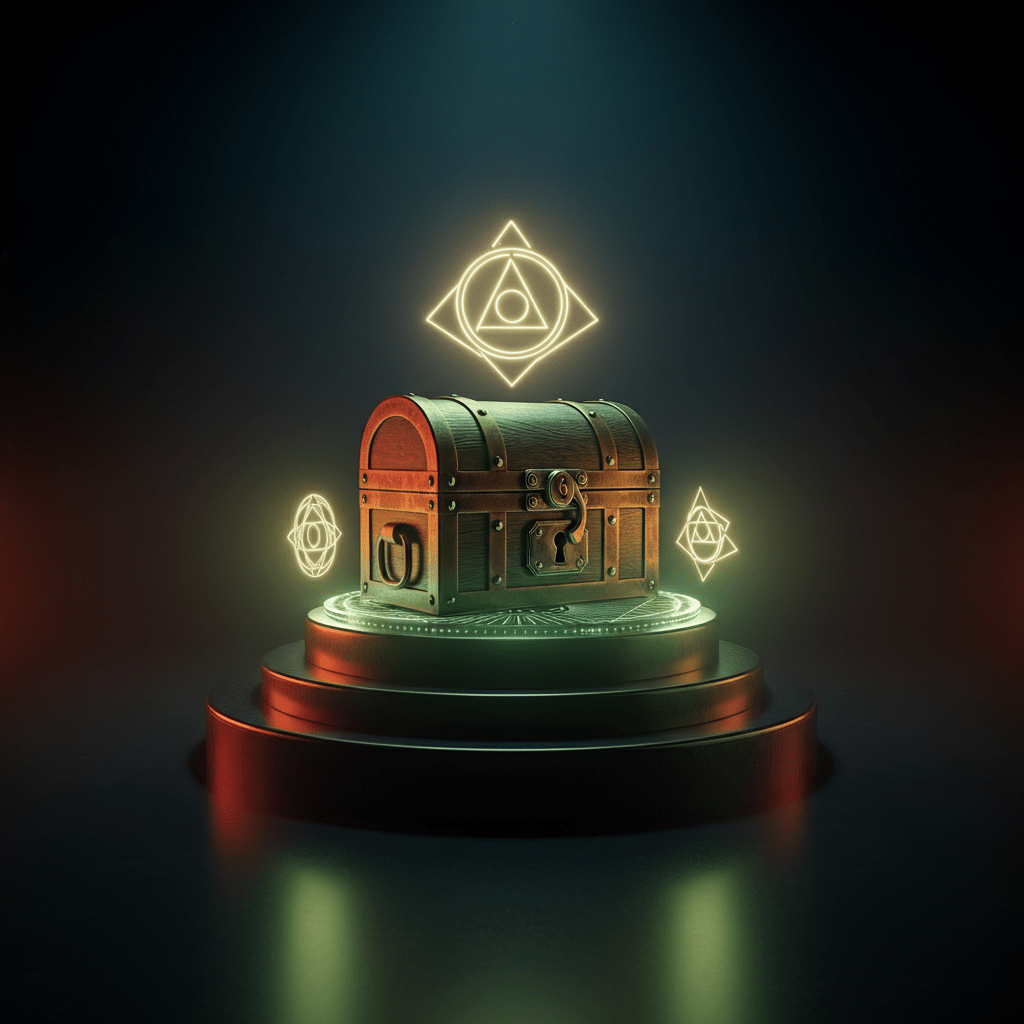
Exploring the Myths and Realities
The supposed ties between celebrities and the Illuminati demonstrate just how compelling secrecy is in human storytelling. While there’s little to no concrete evidence backing these theories, they persist due to their captivating simplicity and the alluring intersections between fame, power, and the unknown.
To dig deeper into specific celebrity-based theories, explore pages like Beyoncé Illuminati or Kim Kardashian and Illuminati. These subtopics provide insight into how myths about the Illuminati are shaped, sustained, and distributed within the public imagination.
Celebrity culture represents a mirror for society’s hopes, fears, and desires. Whether seen as pawns in a secret game of influence or as talented individuals subjected to cultural myths, the ongoing dialogue surrounding celebrity connections to the Illuminati reveals as much about us as it does about them. Continue to explore, and unravel the layers of this fascinating discourse.
Allegations of Occult and Demonic Connections
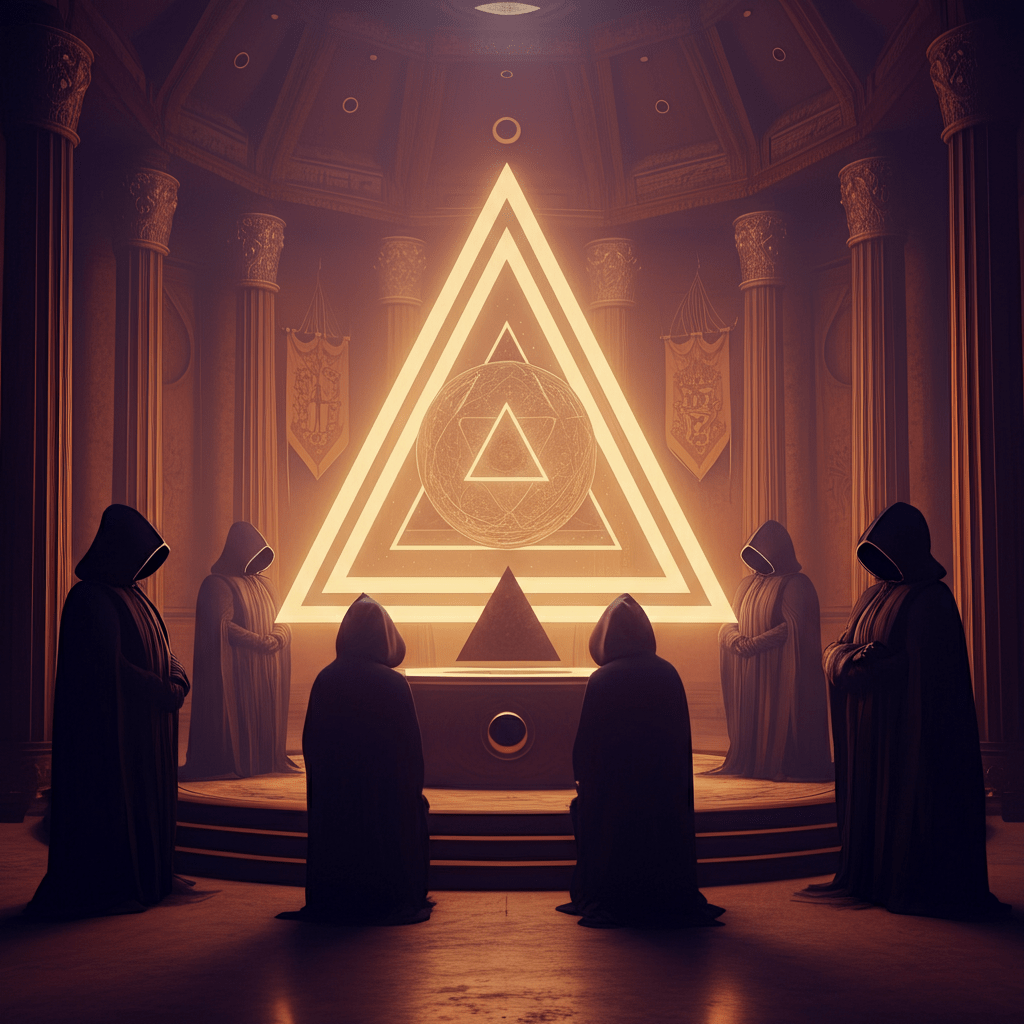
The mystery surrounding the Illuminati often takes a darker turn in public imagination. Allegations of occult practices and demonic connections frequently appear in Illuminati conspiracy theories, adding layers of fear and intrigue to the narrative. This section will explore these claims, the role of symbolism in perpetuating such ideas, and how conspiracy narratives often intertwine the Illuminati with Freemasonry and secret rituals.
A. Is the Illuminati Demonic?
One of the more extreme assumptions about the Illuminati is its alleged connection to demonic forces. Conspiracy theorists often claim that the Illuminati engages in occult rituals that invoke supernatural powers to maintain its global influence. These allegations largely stem from a mix of historical mistrust, cultural storytelling, and the human tendency to ascribe meaning to the unknown.
Although there is no credible evidence supporting the claim that the Illuminati is demonic, such narratives persist because they tap into primal fears of the supernatural. The idea of shadowy elites engaging in ritualistic acts plays into centuries-old fears of heretical groups allegedly working against religious and societal norms. These stories often portray the Illuminati as a cabal that sacrifices morality for power, pulling the strings of world events in exchange for allegiance to dark forces.
One example frequently cited is the supposed use of rituals involving ancient symbols and iconography. Some argue that the Illuminati draws inspiration from occult practices like ceremonial magic or esoteric philosophies, further stoking fears of their intentions. However, these interpretations are almost always speculative and lack supporting evidence.
For those intrigued by the idea of demonic affiliations, our Is the Illuminati Demonic? cluster page takes a closer look at these claims, providing historical context to unravel fact from fiction.
B. The Role of Symbolism in Illuminati Conspiracy Theories
Symbols as a Gateway to Myth
Symbols play a significant role in the portrayal of the Illuminati as an occult organization. From the “all-seeing eye” to pentagrams and pyramids, these icons are often interpreted as evidence of secret rituals connected to supernatural or demonic forces. Conspiracy theorists meticulously study everything from political logos to pop culture imagery in search of supposed hidden meanings.
Take, for instance, the “Eye of Providence,” which appears on the U.S. dollar bill. Originally rooted in Christian symbolism, this all-seeing eye is often labeled as an Illuminati emblem. Similarly, the pyramid structure beneath it is interpreted as representing a hierarchy, with the elite controlling the masses. Another frequently noted example is the use of black and white floors in both Renaissance art and modern music videos, which are often linked to Freemasonry and ritualistic practices.
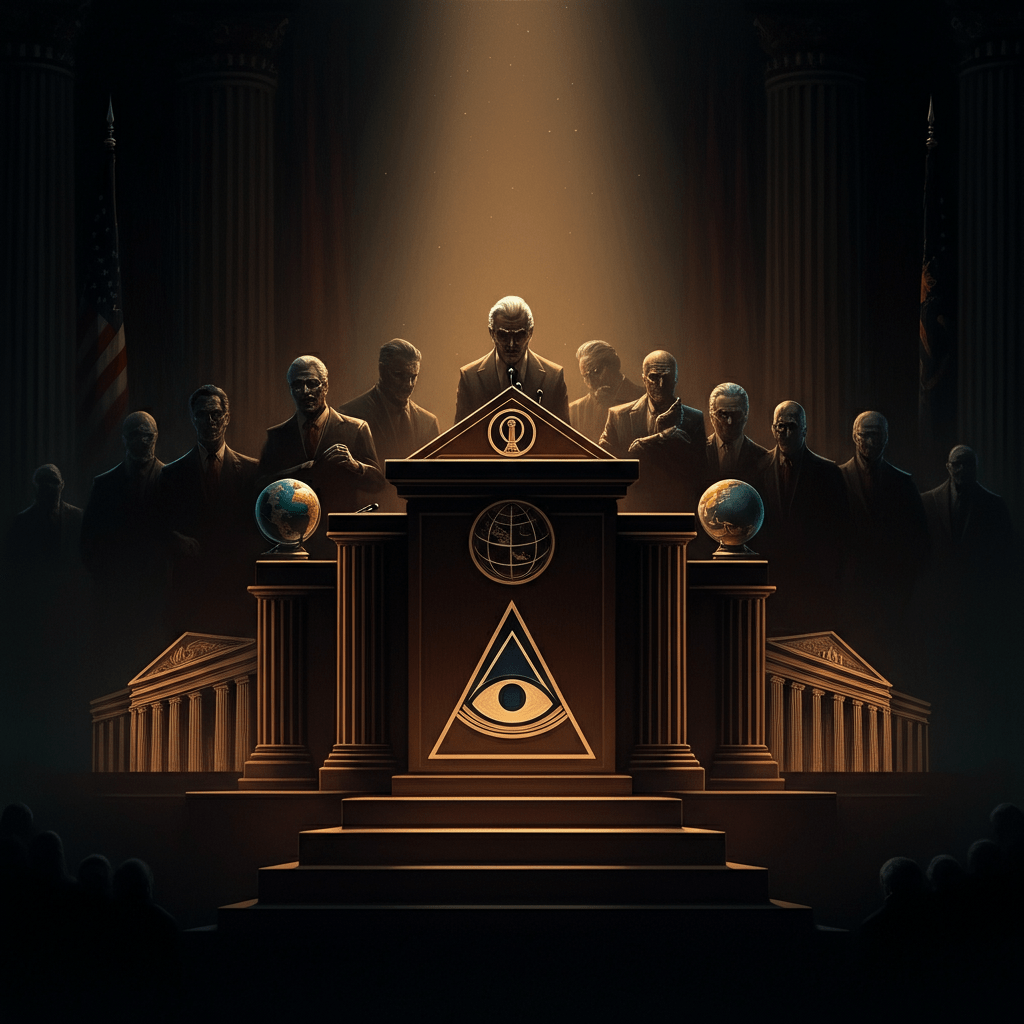
Freemasonry and Secret Rituals
The Illuminati and Freemasonry are often conflated in conspiracy theories because both organizations have historically been associated with secrecy and specific rituals. While the two originated independently, their uses of symbolism and the idea of exclusive membership have created fertile ground for blending their myths.
Freemasonry, a network of fraternal organizations dating back to at least the 14th century, often employs ceremonial tools, hierarchies, and secret handshakes as part of its tradition. Conspiracy theorists frequently elevate Freemason practices to narratives about occult rituals, claiming that they pave the way for Illuminati dominance. Popular narratives suggest membership involves rites that symbolize devotion to hidden or even demonic forces, with rituals allegedly equated to summoning otherworldly entities.
However, modern Freemasonry is public-facing, with demonstrable activities focusing on charity, personal development, and fraternity. Despite this, Freemason imagery continues to be weaponized in conspiracy theorist circles, compounding the narrative of the Illuminati as an occult group. For a deeper look into this overlap, visit the Freemason Occult page, where we break down these misconceptions.
Symbolism and Pop Culture
Pop culture has significantly amplified the use of Illuminati-connected symbols. Movies, music videos, and other forms of entertainment often borrow or parody these motifs, creating speculative material for conspiracy theorists. For example, triangular light setups during performances or jewelry featuring geometric designs are sometimes cited as “proof” of Illuminati connections, regardless of their artistic or personal intent.
This alignment to symbolism ties well with the human tendency to find patterns, a psychological phenomenon known as apophenia. When certain symbols consistently appear in high-profile settings, they gain cultural weight, regardless of their origins or intent. This fuels the belief that these elements are deliberate clues left by a concealed group exerting control.
Unveiling the Truth Behind Allegations
While intriguing, the allegations of occult and demonic connections to the Illuminati are largely unsupported by evidence. These narratives often thrive on speculation, mistrust, and pattern recognition rather than verified facts. They intersect with human fears of the unknown, the allure of secrecy, and pop culture’s ongoing fascination with forbidden knowledge.
To explore these ideas in greater depth, check out Is the Illuminati Demonic? and Freemason Occult. These cluster pages help untangle the myths and provide a balanced perspective on how history, symbolism, and media shape our understanding of the Illuminati.
By grounding our exploration in fact, we can better understand why these allegations hold such cultural appeal, even in a world driven by curiosity, critical thinking, and evidence. The mystery may remain, but the path to uncovering it becomes clearer with each step. Stay open and informed as you continue your exploration of this fascinating subject.
Illuminati’s Alleged Role in Society
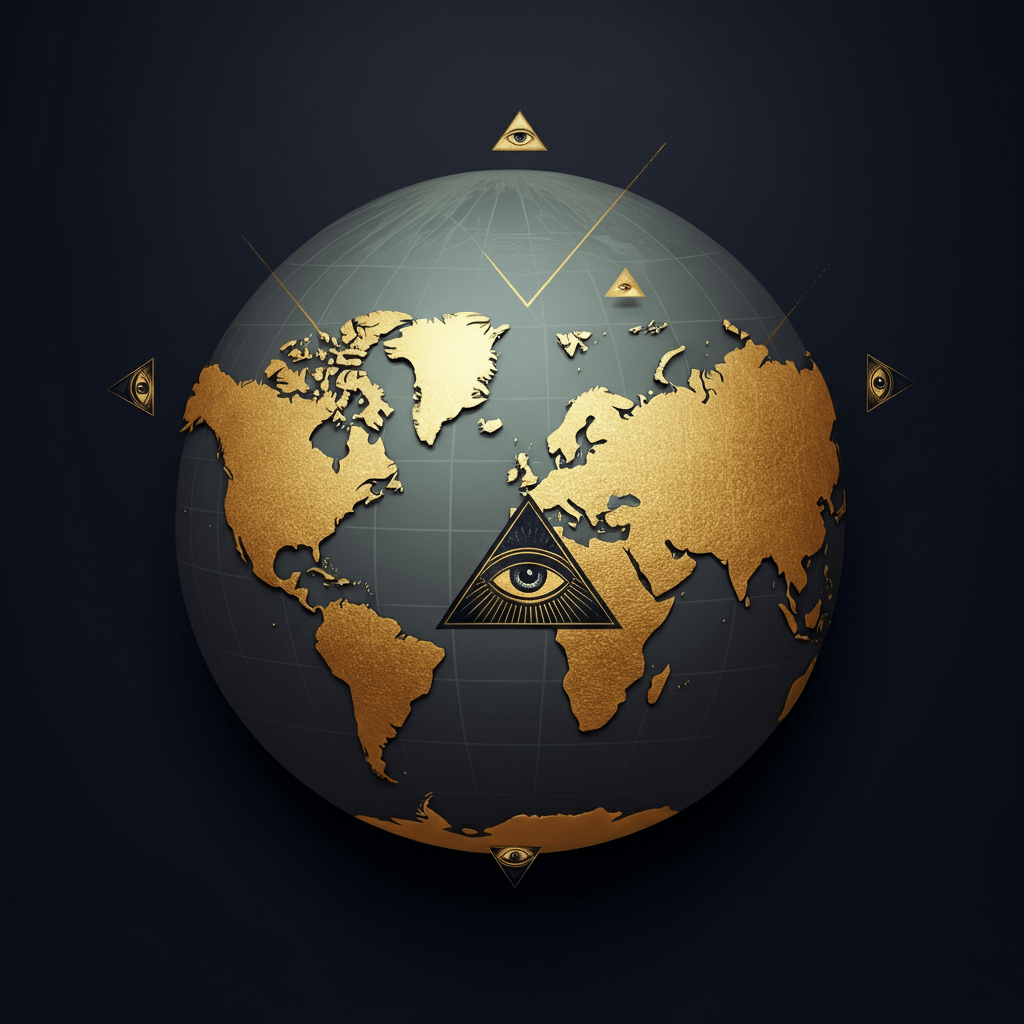
Among the many layers of Illuminati conspiracy theories, the idea that this secret society wields influence in religion, politics, and global economics stands out. These allegations have embedded themselves in cultural consciousness, painting the Illuminati not just as a secretive group but as a controlling force shaping society. Central to these theories are claims about ties to major religious institutions, political leaders, and powerful families like the Rothschilds.
This section examines these speculative connections, tracing how these narratives evolved and why they persist in our collective imagination.
A. Influence in Religion and Politics
The Catholic Church and the Illuminati
One of the most widespread theories is the alleged link between the Illuminati and the Catholic Church. Historically, the Bavarian Illuminati directly opposed the Church’s influence during its short-lived existence in the late 18th century. The group championed Enlightenment ideals like reason, secularism, and individual liberty, positioning itself against the dominant religious powers of the time.
This ideological clash has been reinterpreted in modern conspiracy theories. Some suggest that the Illuminati is an unseen force operating within the Vatican, steering decisions and manipulating global spirituality for personal gain. These claims often highlight the Church’s history of secrecy, such as its closed-door conclaves and the locked archives of the Vatican, as supporting evidence.
Adding to this narrative are supposed alignments between Catholic symbolism and imagery associated with the Illuminati. Examples include the use of the all-seeing eye in some religious artwork or pyramid-like motifs in church architecture. While these elements are rooted in historical and artistic tradition, they are often reframed by theorists as intentional nods to Illuminati involvement.
Despite the intrigue surrounding these ideas, there is no documented evidence to support claims of Illuminati control over the Catholic Church. For a balanced look at how these theories develop, readers can explore the Catholic Church and Illuminati cluster page for further insights.
The Illuminati and American Presidents
Political power plays a central role in Illuminati narratives, especially when it comes to American presidents. Conspiracy theories often allege that certain leaders were either members of the Illuminati or heavily influenced by the group. This idea is rooted in the perception of the United States as a global superpower, with its leaders serving as key players in shaping global policies and events.
One recurring theory is that the Founding Fathers of the United States were tied to secret societies, including the Illuminati or Freemasons. The use of masonic imagery, such as the Eye of Providence and pyramid on the U.S. dollar, fuels claims that American leadership is linked to secretive agendas.
Presidents from George Washington to Barack Obama and even Donald Trump have been subject to various Illuminati allegations. Theories suggest their political successes were orchestrated by hidden forces, with policy decisions aimed at furthering the Illuminati’s goals. This is often paired with scrutiny of hand gestures, phrasing in speeches, or symbolic adornments during official proceedings, all of which are interpreted as signs of allegiance.
However, much like the allegations involving religion, such claims lack substantial evidence. They are often born from speculative connections between historical societies and modern politics. To learn more, visit American Presidents Illuminati, where these narratives are explored in depth.
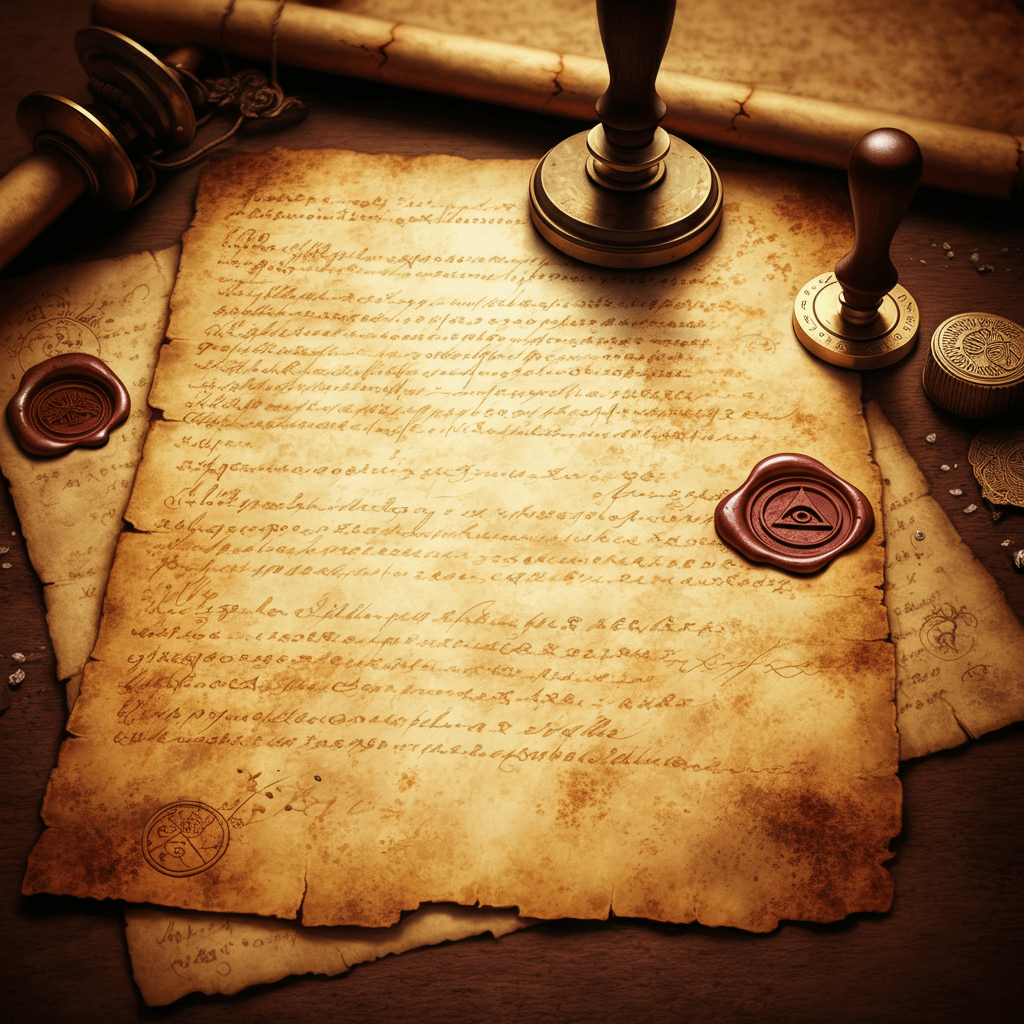
B. The Rothschilds and the Illuminati
The Rothschild family stands as one of the most prominent names tied to conspiracy theories about the Illuminati. Known for their historical involvement in global banking and finance, the Rothschilds have been at the center of narratives implicating them as key players in an alleged Illuminati agenda.
How the Rothschilds Became a Symbol
The story of the Rothschilds’ wealth and influence begins in 18th-century Europe, where Mayer Amschel Rothschild established a banking dynasty. His descendants expanded the family’s reach across the continent, leading to unparalleled financial success. This influence in European banking and politics has made the Rothschild name synonymous with wealth, power, and secrecy.
Conspiracy theories often claim that the Rothschilds use their resources to manipulate global markets, fund wars, and control governments. Within these narratives, the family is painted as a financial arm of the Illuminati, working behind the scenes to maintain political and economic control. From orchestrating economic collapses to funding both sides of major conflicts, the Rothschilds are portrayed as omnipresent players in world events.
The Intersection of Anti-Semitism and Conspiracy Theories
It’s important to recognize that many of these claims are entwined with deeply rooted anti-Semitic tropes. Theories about the Rothschilds as secret manipulators of global finance often echo harmful stereotypes that date back centuries. These narratives tap into fears of centralized power and provide oversimplified explanations for complex global events.
While the Rothschild family’s financial achievements are undisputed, there is no concrete evidence tying them to the Illuminati or supporting accusations of global manipulation. Diving into the Rothschild Illuminati cluster page offers a closer look at the origins of these theories and their underlying implications.
Constructing Power Narratives
The Illuminati’s alleged influence in religion, politics, and finance reflects broader societal fears about power and control. These theories often thrive in times of uncertainty, providing straightforward answers to complicated realities. By identifying a shadowy group as the “mastermind,” they allow people to rationalize everything from economic downturns to political unrest.
For all their intrigue, these claims offer more insight into cultural anxieties than actual historical events. Exploring these narratives critically enables readers to separate fact from fiction, allowing for a clearer understanding of where these stories come from and why they persist.
For a deeper exploration of these topics, don’t miss Catholic Church and Illuminati, American Presidents Illuminati, and Rothschild Illuminati. These resources break down popular claims and provide the context needed to better understand this fascinating subject.
By continuing to examine these theories responsibly, we can demystify the allure of the Illuminati and gain a more grounded view of the forces shaping our world.
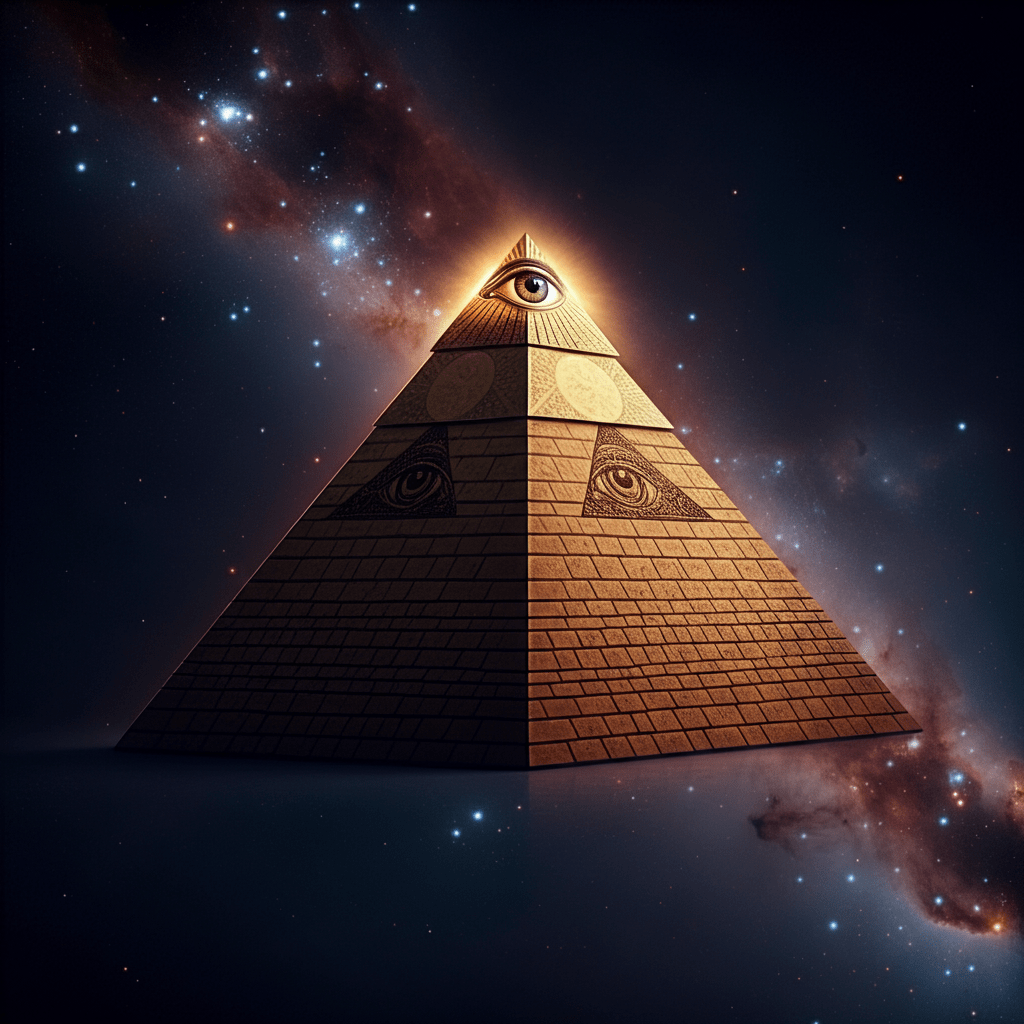
Cultural Representations and Misconceptions
The Illuminati owes much of its modern mystique to pop culture. Films, television shows, music videos, and even viral internet content have amplified the lore, often painting the Illuminati as a secretive powerhouse lurking behind global events. Beyond screen portrayals, certain symbolic landmarks or “iconic” structures have become subjects of fascination, fueling a cultural obsession that blurs the lines between fiction and reality.
This section explores the role of Hollywood in driving these conspiracy theories and the allure surrounding The Illuminati House.
A. Illuminati and Hollywood
Hollywood, as the global hub of entertainment, has significantly shaped public perceptions of the Illuminati. Directors, writers, and artists often tap into secret society tropes to create compelling narratives, transforming the Illuminati from a historical organization into a shadowy and omnipresent antagonist.
The Birth of the Conspiratorial Narrative in Media
The concept of a secret society pulling strings behind the scenes isn’t new. However, modern Hollywood has taken these ideas to a dramatic extreme. Films like Angels & Demons and National Treasure depict the Illuminati as masterminds behind world-altering conspiracies. They portray the group as being intertwined with historical events, mysterious codes, and hidden treasure. Though these movies often disclaim that they are works of fiction, their gripping storytelling leads many viewers to believe there’s something more to the narrative.
Similarly, television series—including crime dramas and sci-fi blockbusters—reference the Illuminati. From covert meetings in dimly lit rooms to clandestine organizations bent on world domination, these recurring themes reinforce the idea of a powerful secret society. The consistent use of symbols like triangles, pyramids, and the all-seeing eye in these shows has further solidified an association between the Illuminati and manipulative power.
Music Videos as “Evidence”
Pop culture doesn’t stop at Hollywood films. A significant branch of Illuminati speculation stems from the music industry, particularly through music videos. Bright visuals, avant-garde performances, and symbolic imagery have been interpreted by conspiracy enthusiasts as a deliberate display of Illuminati-related references.
For instance, many artists, including Lady Gaga and The Weeknd, have used abstract imagery involving unblinking eyes or geometric shapes in the background of their productions. These are often viewed as subtle winks, intentionally planted as confirmations of their supposed membership in the Illuminati. Others argue that artists’ deliberate use of mystery and esoteric symbols is part of crafting an artistic vision, not evidence of secret society allegiance.
However, the growing library of videos online dissecting such performances has steadily expanded the power of conspiracy thinking. Platforms like YouTube are flooded with “explainers” claiming to translate these music videos into coded messages, further extending the reach of these ideas among curious viewers.
Why This Narrative Persists in Hollywood
Why does Hollywood keep coming back to the Illuminati? Because secrecy sells. The entertainment industry thrives on mystery, intrigue, and the thrill of hidden truths. The Illuminati is an ideal metaphor for themes of control, ambition, and the battle between freedom and manipulation.
For a closer exploration of how films, television, and music drive these conspiracies, visit the Hollywood Conspiracy page. It provides an in-depth look at the ways media has sensationalized the Illuminati, blurring the line between art and reality.
B. The “Illuminati House”
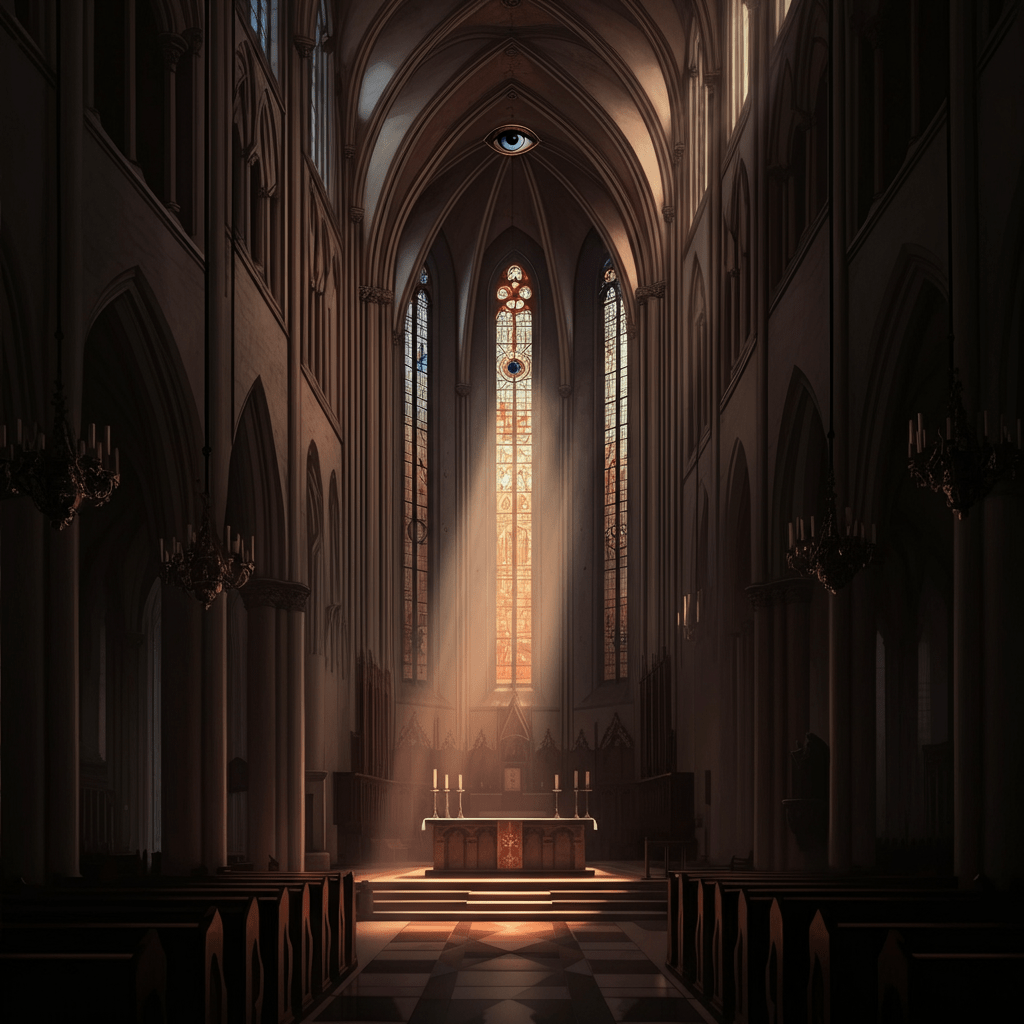
Beyond Hollywood, another aspect of Illuminati lore is tied to landmarks or locations said to serve as hubs of secret activity. Among these, the so-called “Illuminati House” has gained significant cultural prominence as a symbol of the organization’s mysterious influence.
The Allure of Secretly Symbolic Spaces
The “Illuminati House” isn’t one specific building—instead, it represents a collection of sites or structures steeped in symbolic design and historical significance. Often seen as places where the Illuminati supposedly meets or operates in secret, these iconic locations are frequently associated with architectural grandeur and cryptic imagery. For some, these buildings hold a deeper meaning, with their designs offering “hidden” proof of Illuminati involvement.
Take iconic pyramids like the Louvre in Paris or historical masonry-heavy structures such as the U.S. Capitol. These places are rich with design choices that conspiracy theorists interpret as messages or markers left by the Illuminati. Geometric precision, glyphs, and symmetrical patterns draw interpretations of hidden codes locked in the design, waiting to be uncovered.
Certain mansions or private properties have also been roped into the “Illuminati House” concept. These houses are often extravagant, shrouded in rumors of mysterious ownership, and located in isolated or carefully guarded areas. Conspiracists claim that such locations serve as safe havens where the Illuminati conducts occult rituals or strategizes its global agenda.
The Role of Fiction in Real Estate Obsession
Interestingly, elements of fiction and storytelling enhance the fascination with these locations. Consider urban legends about certain estates where secret meetings of world leaders supposedly take place. Popular conspiracy theories about haunted houses, combined with Illuminati lore, add fuel to these narratives. Images of empty corridors, secret chambers, and lavish rooms filled with medieval relics create vivid mental pictures that lend further life to the fascination.
Unraveling these myths shows how the human imagination quickly fills the gaps where facts are absent. While buildings like these often have historical or cultural significance, their alleged ties to the Illuminati are speculative at best. Visiting the Illuminati House link can provide a clearer picture of how architecture and imagination come together to fuel these claims.
The Intersection of Myth and Fascination
The Illuminati’s depiction in pop culture and the collective imagination surrounding its alleged landmarks reveal a broader truth about human curiosity. We are drawn to stories about hidden knowledge and secret power because they suggest that the world operates on levels beyond what we see. Although these narratives are captivating, separating fact from fiction demands critical thinking.
For a deeper understanding of how cultural mediums shape these myths, check out the Hollywood Conspiracy and The Illuminati House pages. Examining these points of fascination gives us insight not only into the appeal of the Illuminati but also into the larger stories we, as a society, want to believe.
What remains clear is that as long as there are movies to watch, symbols to interpret, and landmarks to speculate about, the idea of the Illuminati will continue to capture the imagination of many. By exploring these cultural representations responsibly, we can appreciate the artistry and curiosity they inspire without veering into unwarranted fear and paranoia.
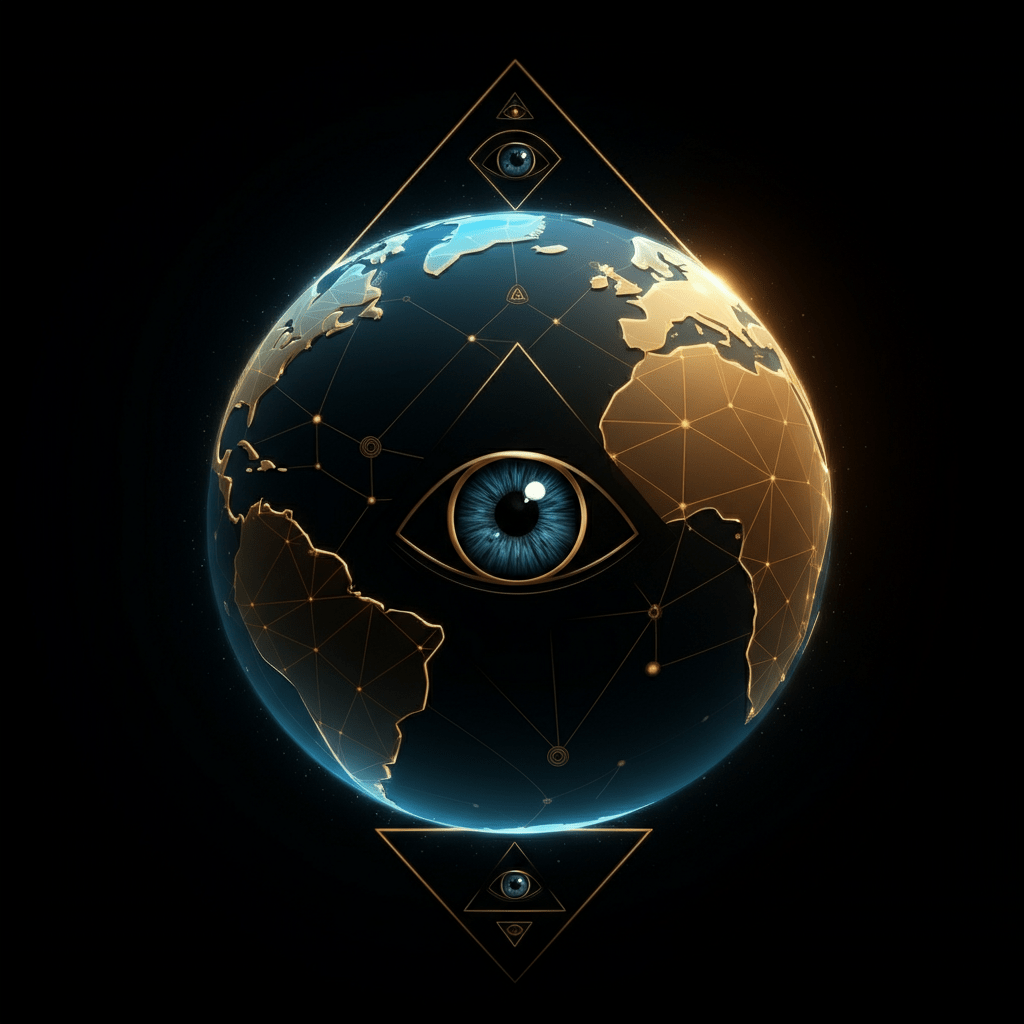
Conclusion
The enduring allure of Illuminati conspiracy theories speaks to humanity’s fascination with mystery, secrecy, and the unknown. Tracing the group’s origins back to the Enlightenment era reveals its transformation from an intellectual society challenging authority to the centerpiece of modern myths about hidden power. Over time, a combination of cultural storytelling, symbolic interpretation, and media sensationalism has elevated the Illuminati from historical footnote to a source of intrigue deeply woven into pop culture.
From allegations of celebrity affiliations and occult practices to speculations about control over religion, politics, and global economics, these theories offer a compelling narrative that resonates across generations. They thrive on uncertainty, fueled by iconic symbols like the Eye of Providence or mysterious landmarks like the so-called “Illuminati House.” Meanwhile, Hollywood and the music industry perpetuate these myths, blurring the boundaries between fact and fiction, art and reality.
However, separating truth from rumor is vital when engaging with such theories. The narratives surrounding the Illuminati often focus less on credible evidence and more on speculation, pattern recognition, and cultural anxieties about power and influence. They highlight our human tendency to search for meaning, often leading us to create connections where none exist.
Understanding the appeal of Illuminati conspiracy theories doesn’t just keep us entertained; it serves as a reminder of the value of critical thinking in navigating today’s media-saturated world. By challenging assumptions, examining motives, and relying on verified facts, we empower ourselves to view these conspiracies as cultural phenomena rather than uncontested truths.
In the end, the Illuminati’s enduring mystique isn’t just a reflection of secret societies, but of society itself. Curiosity drives us to explore these narratives—but it’s our commitment to discernment that ensures we keep the line between fiction and reality clearly defined. Whether you see the Illuminati as a symbol of hidden power or an invention of overactive imaginations, one thing is certain: its story continues to captivate us, inviting questions, debates, and endless speculation.
